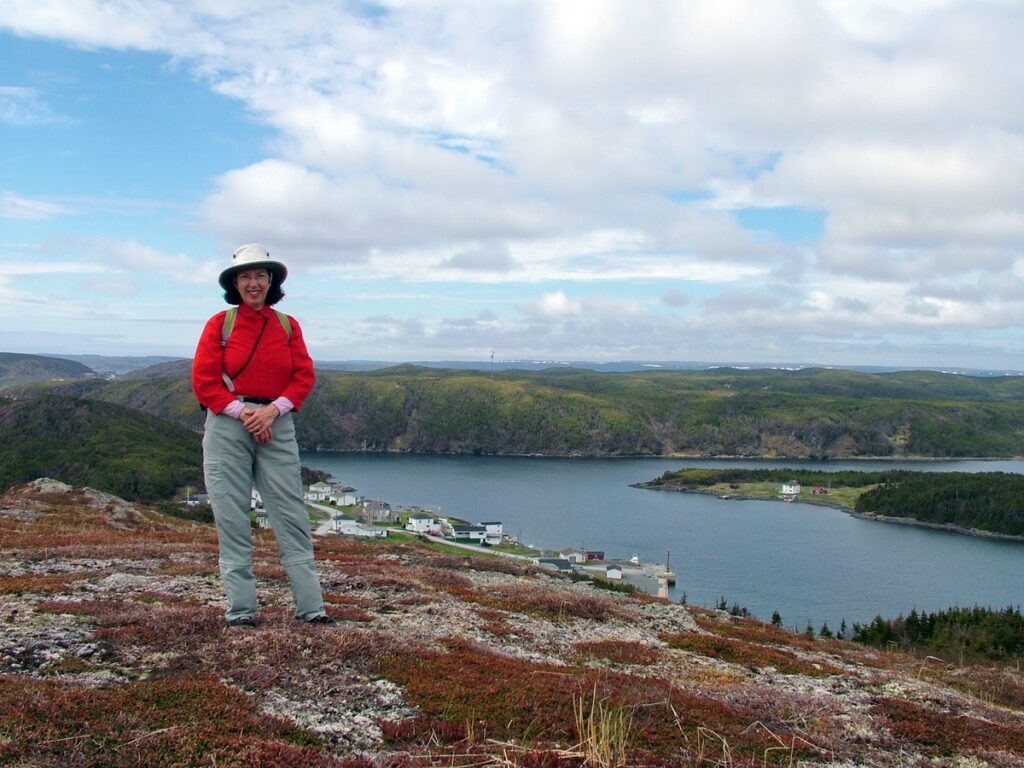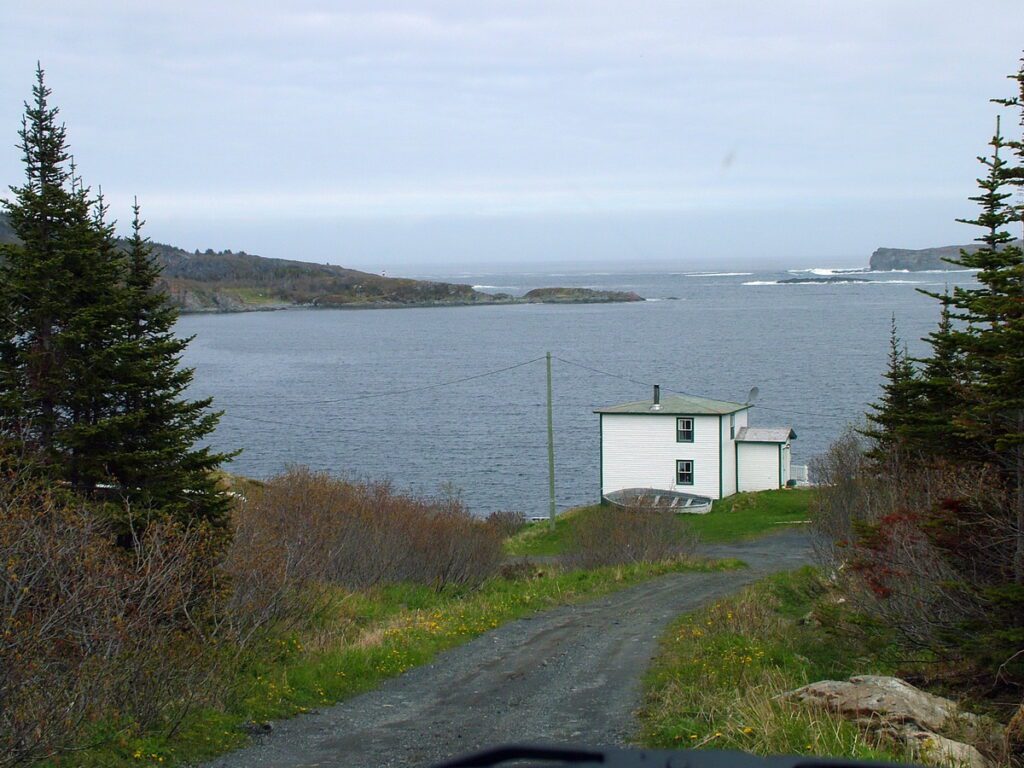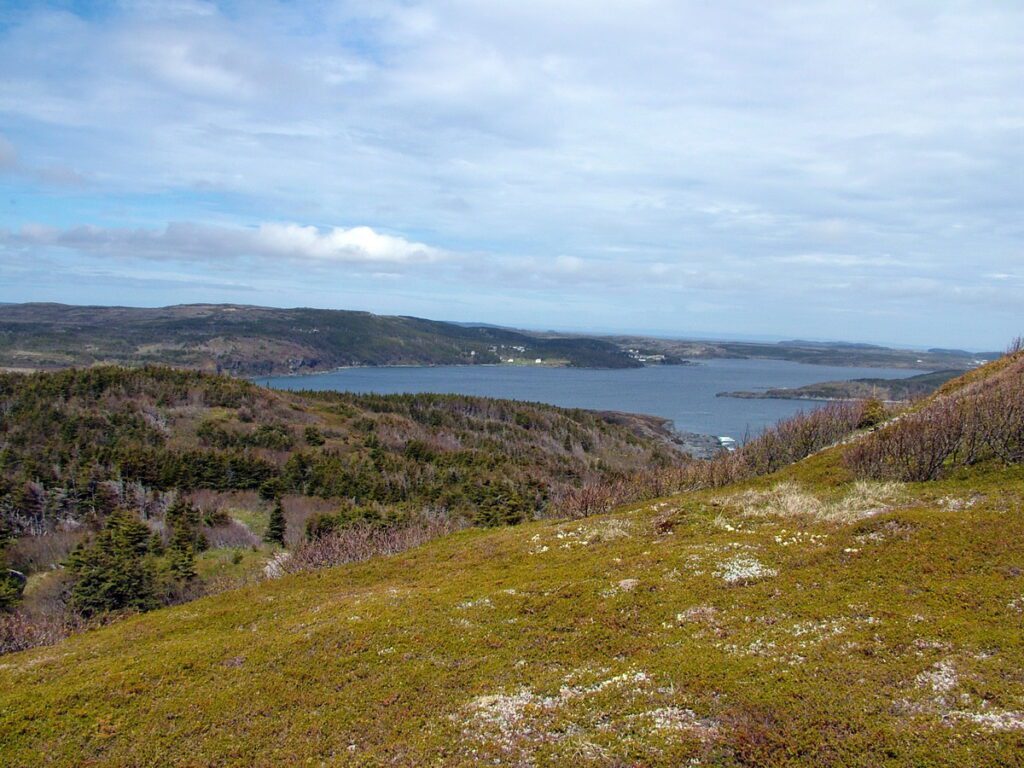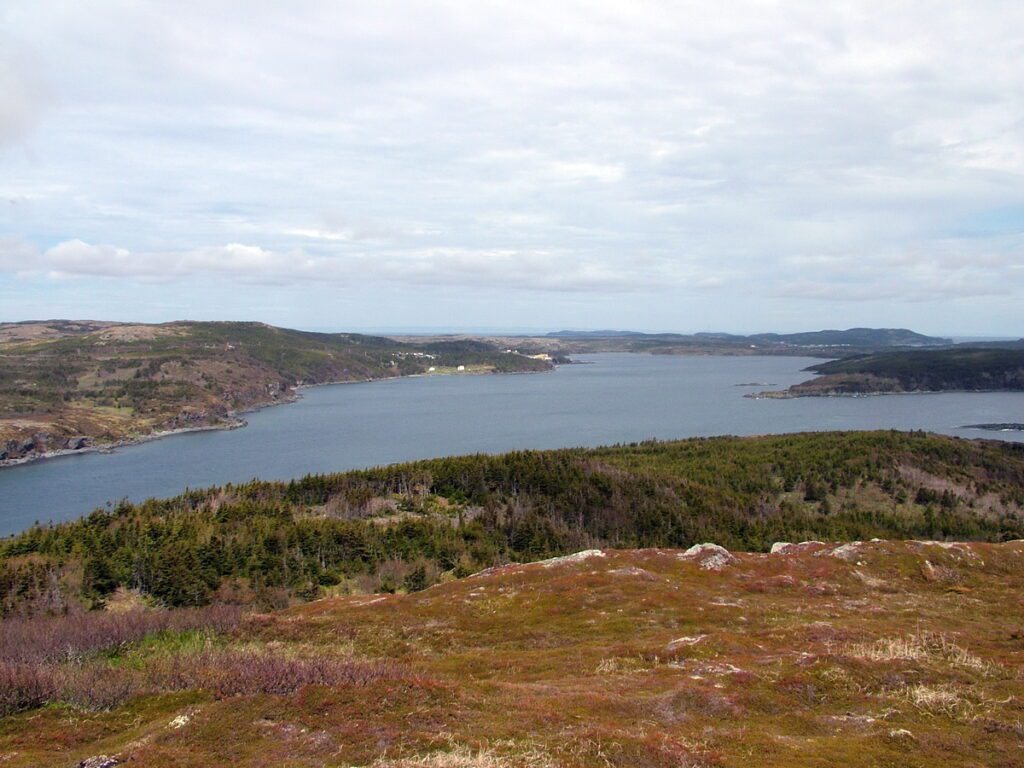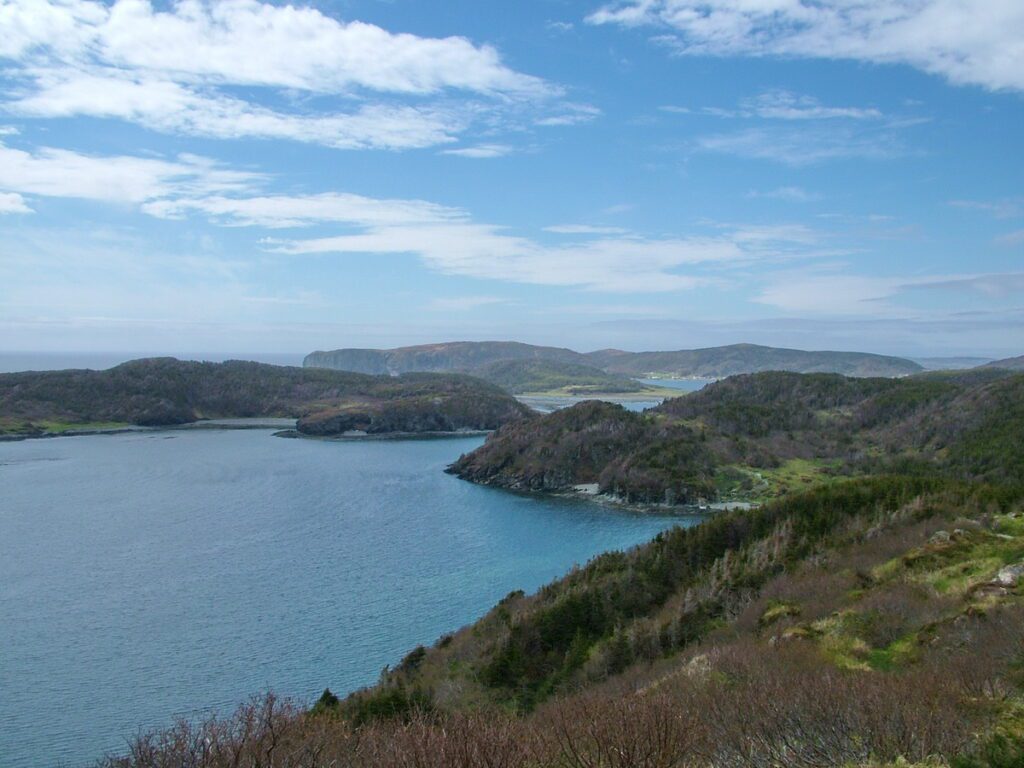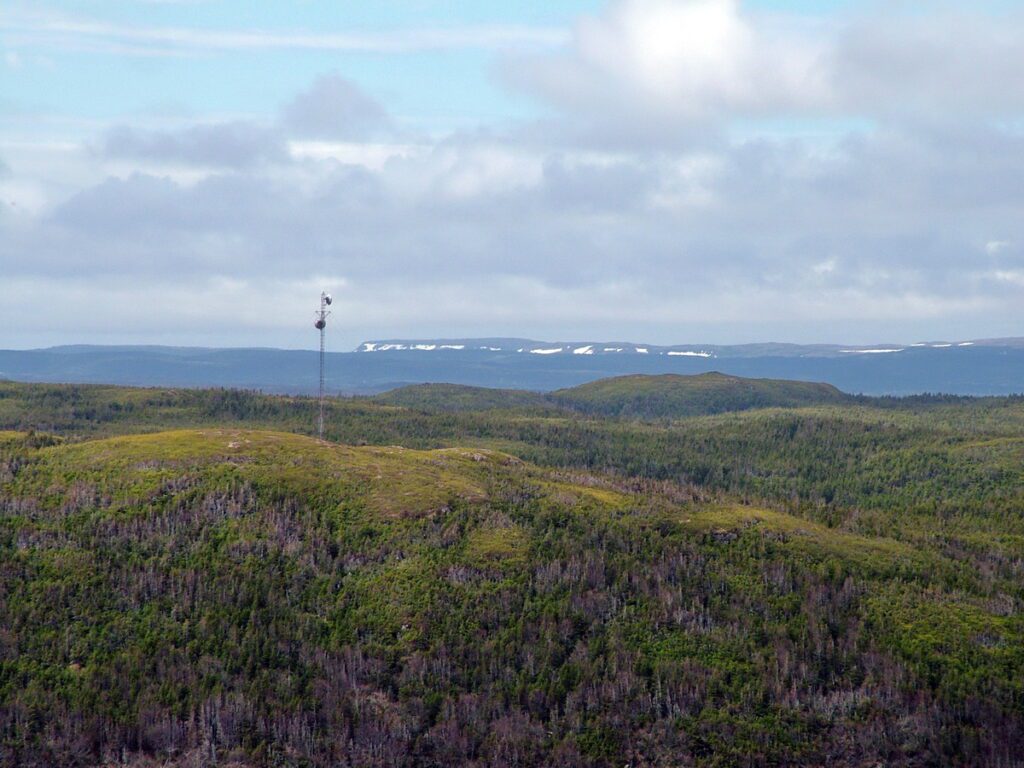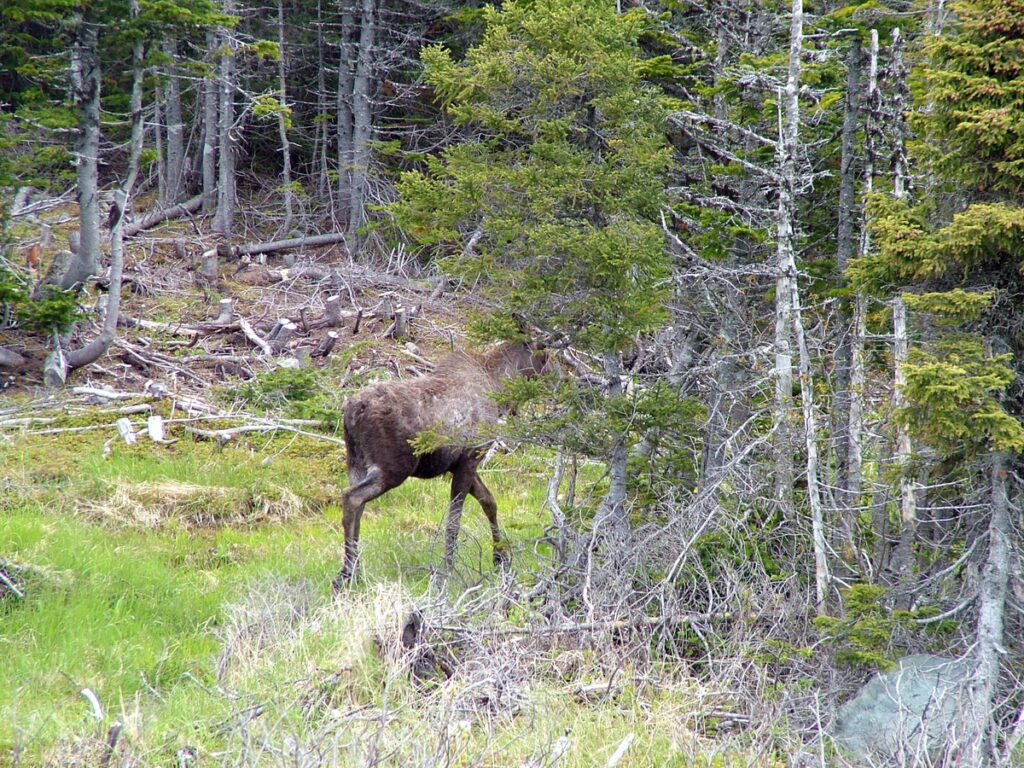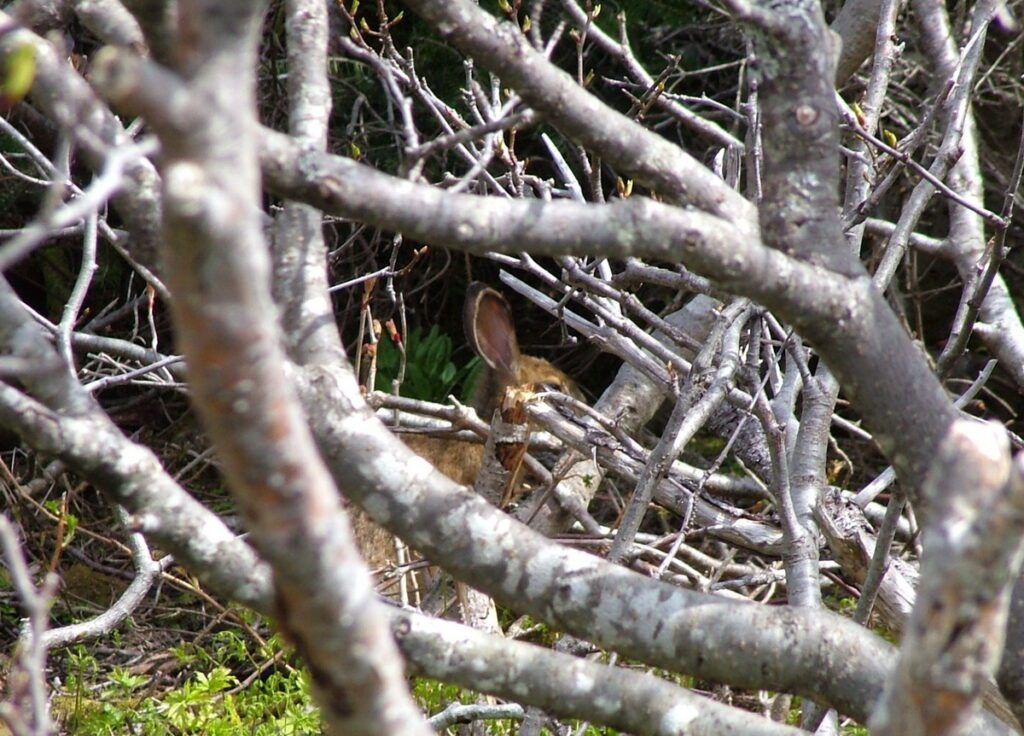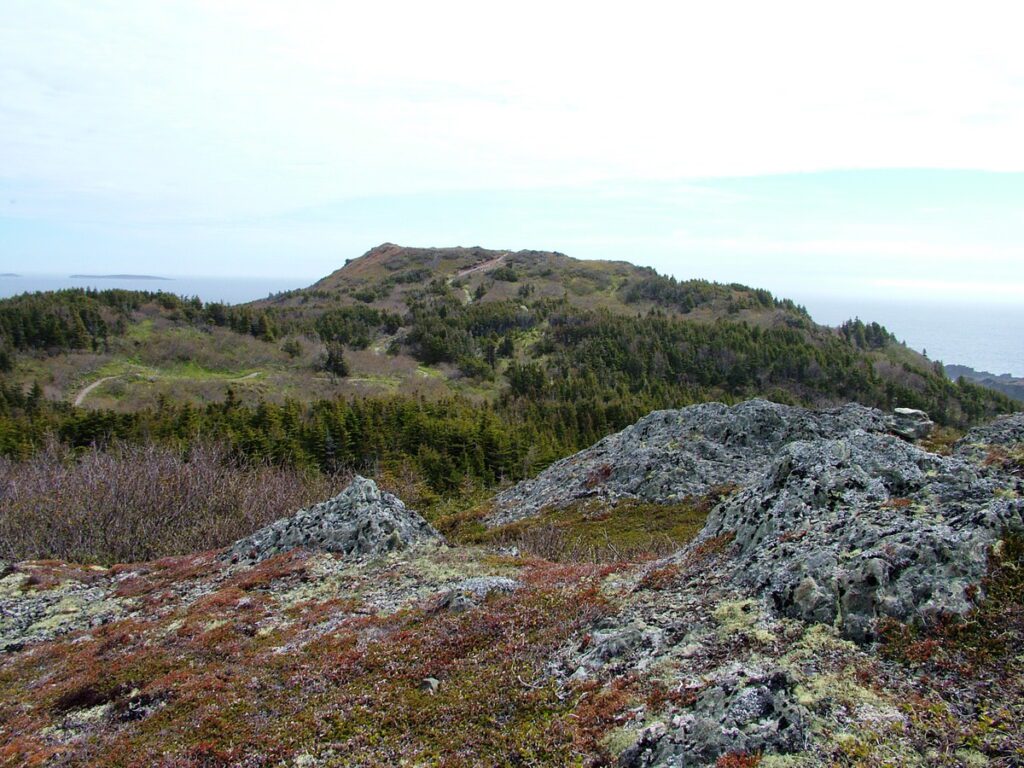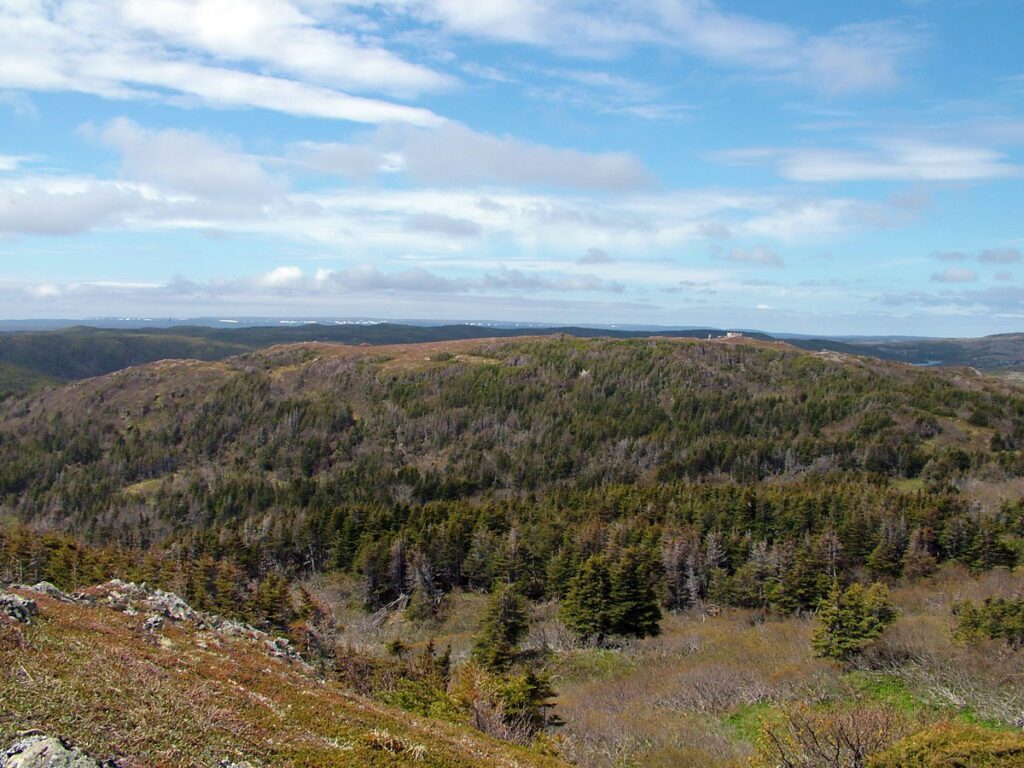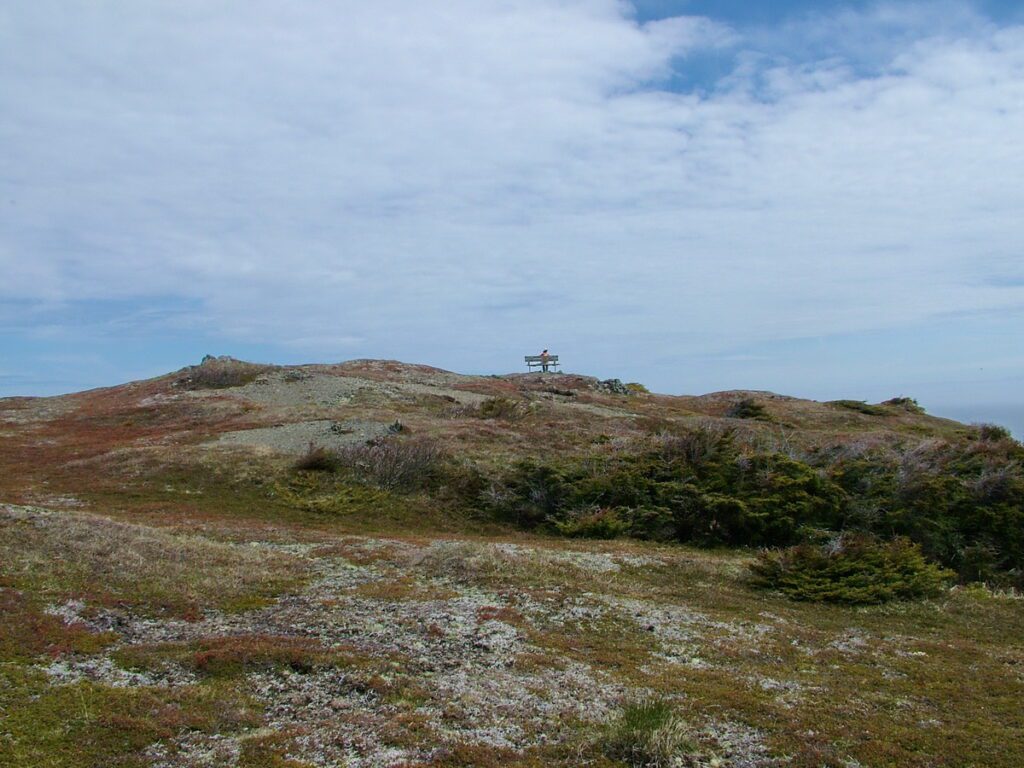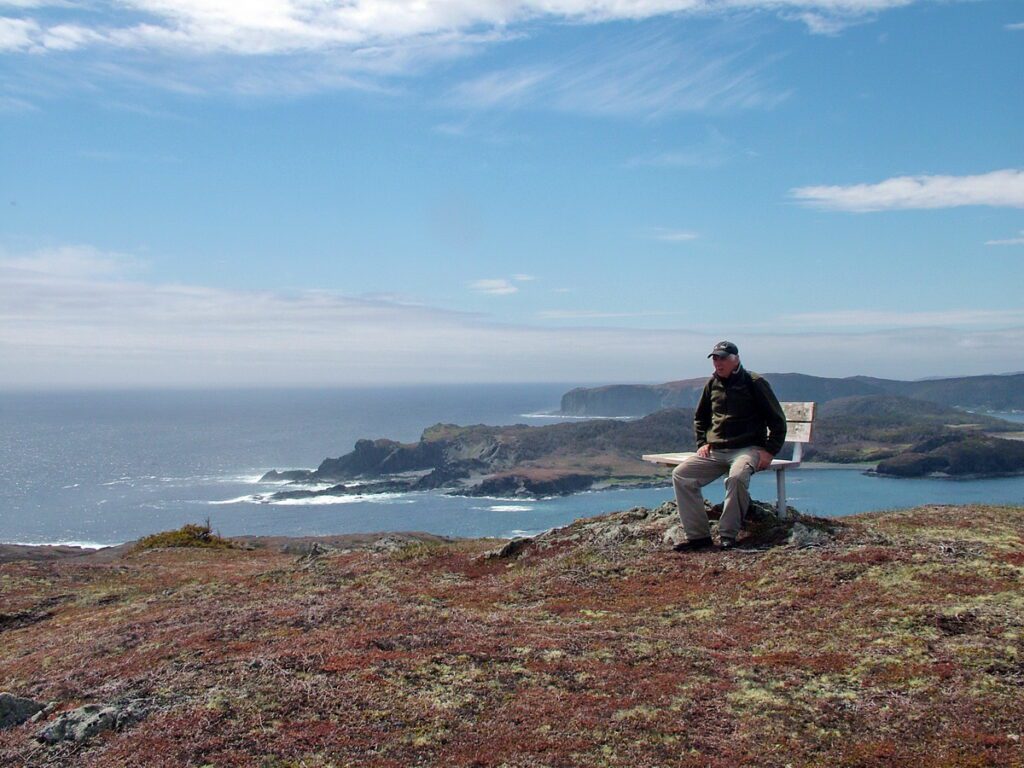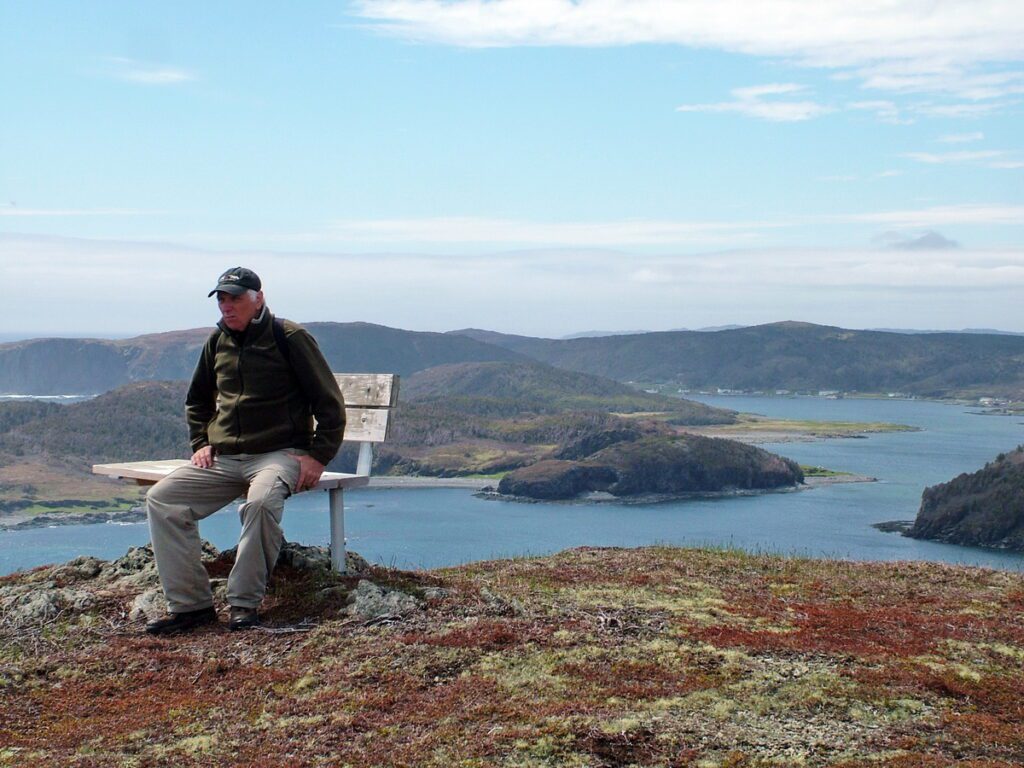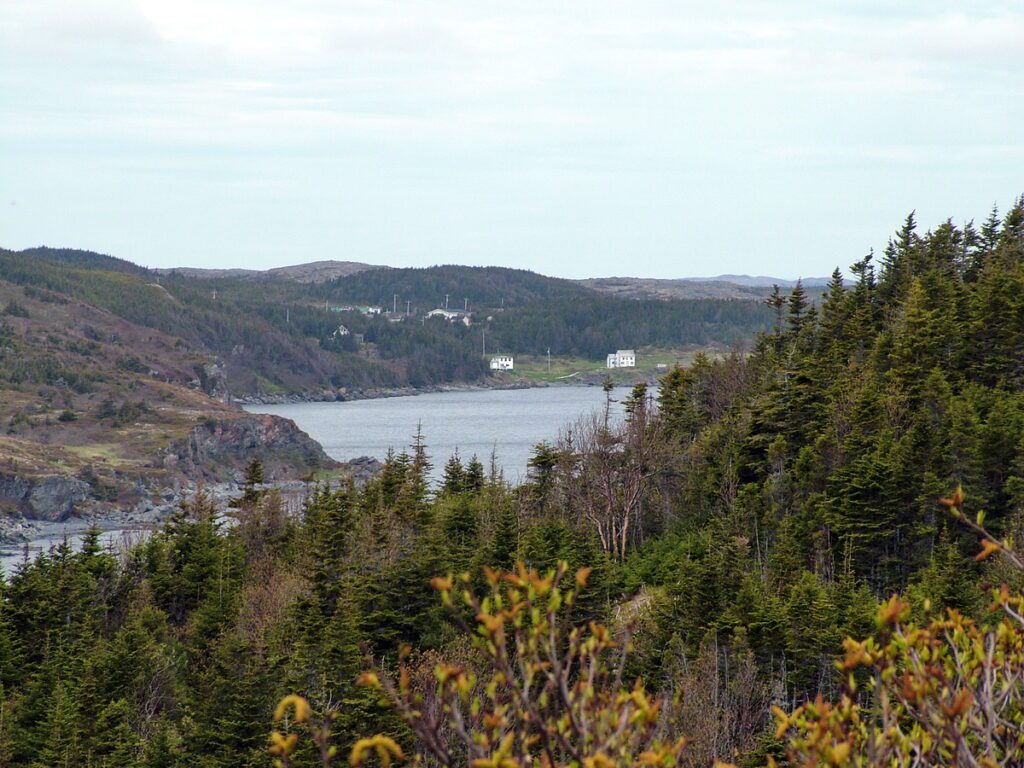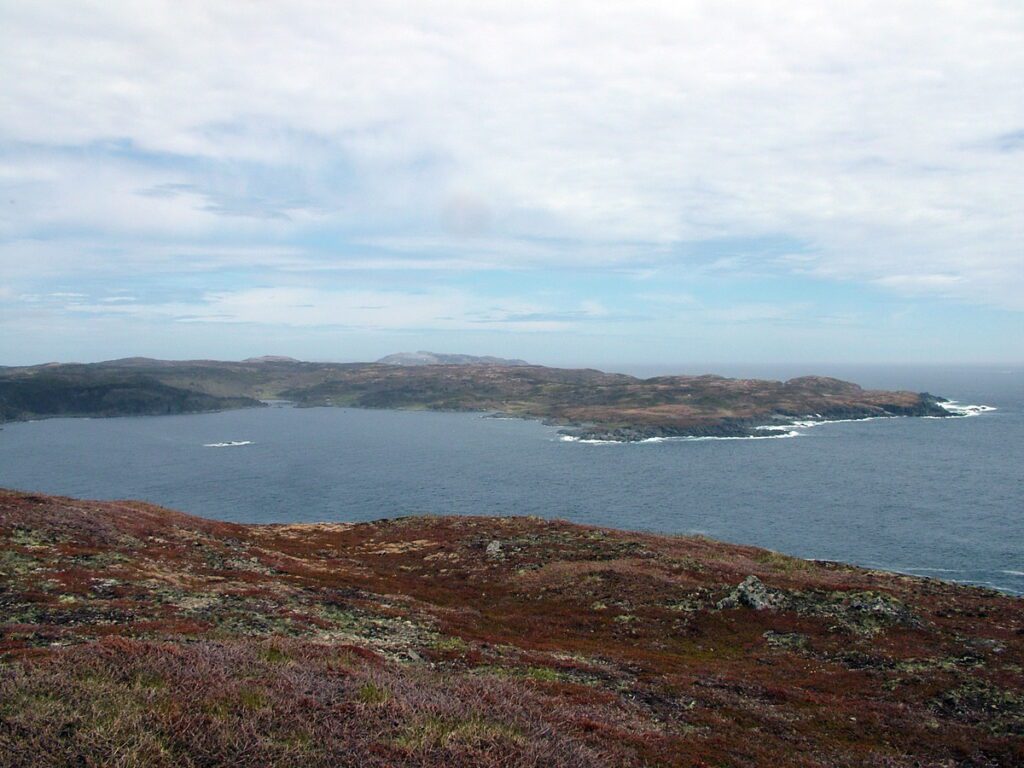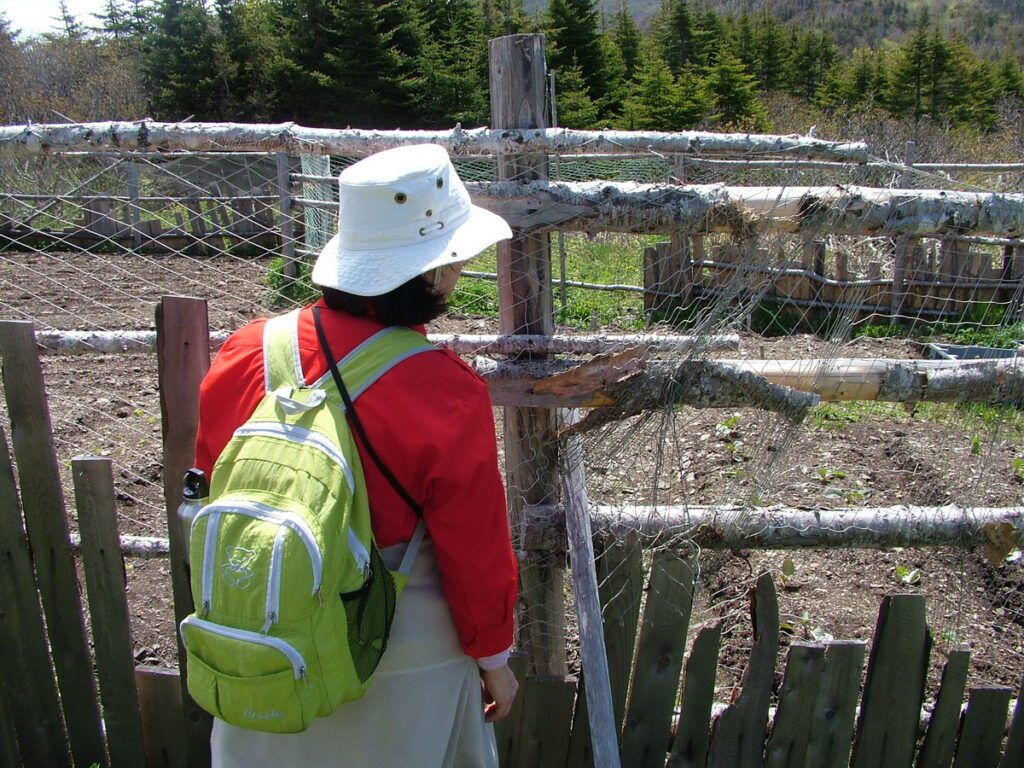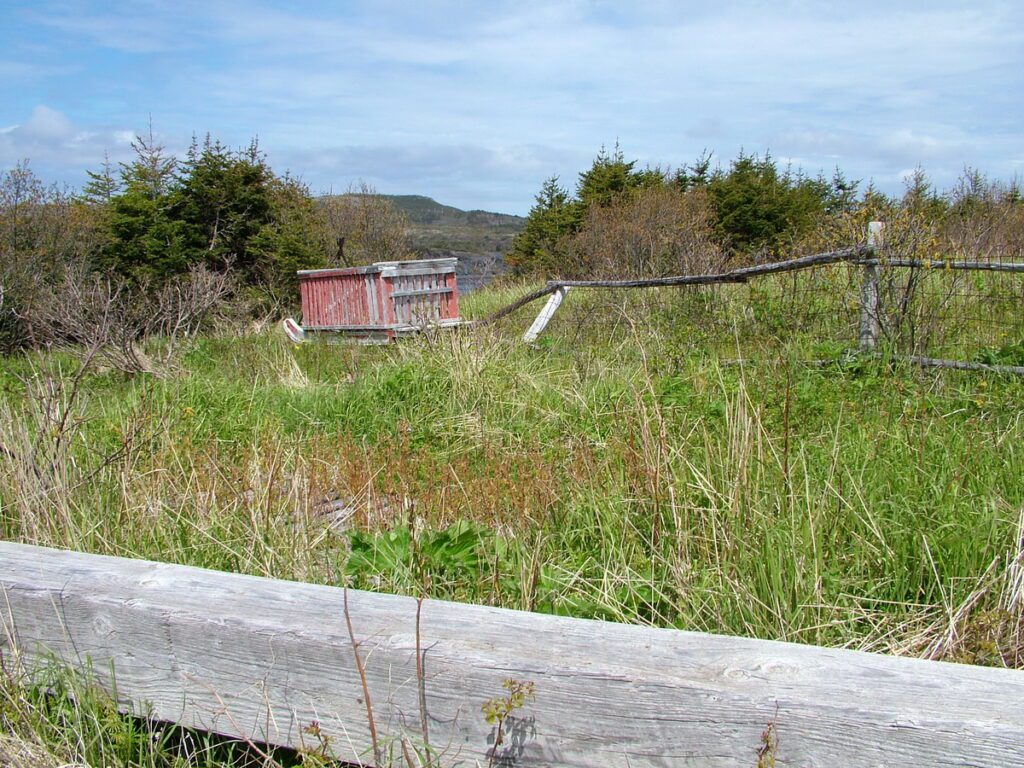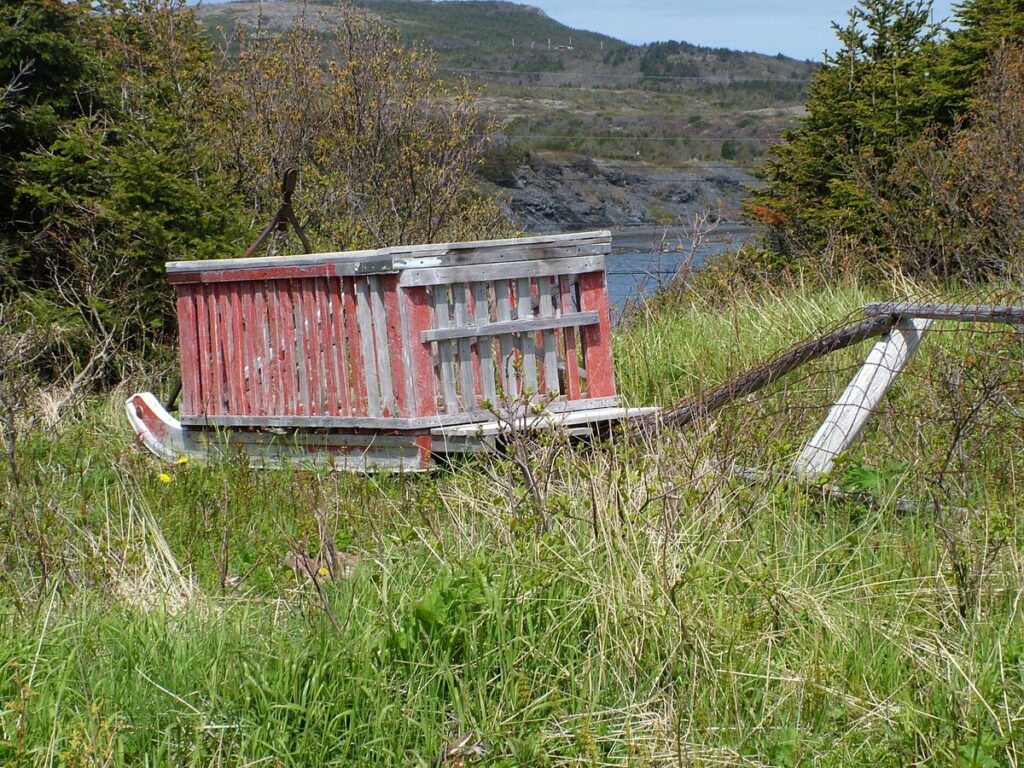Ocean Views from Camel’s Back Trail in Newfoundland
L’Anse aux Meadows had immersed us in the Viking history of Newfoundland a day earlier, and now, it would be time to travel to our next destination. First, however, a hike was in order to further appreciate the landscape and ocean views along the Camel’s Back Trail near the Town of Saint Lunaire-Griquet.
From our accommodation at Wavey’s House, using binoculars, Robert had been able to pick out a hiking trail on the headlands in the distance.
It was necessary to drive to Saint Lunaire-Griquet and then locate the Dark Tickle area.
“What is a Tickle?”, we asked. In Newfoundland English, a tickle is defined as a narrow salt-water strait such as an entrance to a harbour or between islands or other land masses.
We found that Dark Tickle Road crossed a narrow expanse of water, the tickle, to Camel Island.
Bob and I parked at the end of the road and realized that a private driveway lay between us and the trailhead sign. Easing our concern was a warm spirited gentleman who emerged from his home to welcome us. He also told us to heed a huge bull moose, complete with rack, that had been frequenting the trails for the previous few days. The moose could give chase if caught off guard.
Given the topography, Bob and I anticipated a rocky incline. Instead, the previous day’s rain rendered the track quite muddy. That was helpful in revealing recent moose activity in the area.
It wasn’t long before we came upon a cow Moose grazing about 15 feet off to the side of the trail. Using our bear bell, we made the Moose aware of our presence. She promptly slipped out of sight into the underbrush.
A huge Rabbit nibbled grass in the shadows a bit further on. Thick branches obscured our view.
Camel’s Back Trail seemed apropos as a name. The trail was a constant uphill climb to reach the “camel’s back”.
Listed as moderately challenging, the gentle slopes were easily scaled by Bob and me.
Benches and picnic tables were provided at intervals where hikers could sit and pause awhile.
At the top of the world, as we felt we were, lovely vistas were revealed of Griquet Island to the east and Four Ears Island in the southeast.
In addition to the spectacular panoramic view, it was said that we might see whales or icebergs. Scanning the waters with nigh on 360° visibility, we saw neither. Saint Lunaire-Griquet sat snuggled against the shore in the distance.
When turning our heads towards the mainland of Newfoundland across Griquet Harbour, imagine our delight when our eyes alit on Wavey’s House from which we departed earlier in the day.
At that time, we had not realized that Camel’s Back Trail was on an island separate from Newfoundland.
In the lee of one knoll on Camel Island, some residents had cultivated a garden plot.
The ever-present threat of Moose and Deer consuming crops had the gardener erecting protective fencing.
Appearing derelict and half overgrown with grass and bushes was a large wooden sledge.
Used for hauling firewood, it had been laid to rest until snow once again covered the ground. Then it would be time to head to the woods and cut some trees.
As we neared the end of Camel’s Back Trail, I was delighted to find a patch of beautiful Iceland Poppies in a sheltered corner. It was apparent that they had escaped the confines of someone’s kitchen garden and were continuing to spread willy-nilly.
With their delicate petals fluttering in the breeze, they beautifully framed yet another gorgeous ocean view. Camel’s Back Trail had provided the perfect way to start our day!
Frame To Frame – Bob and Jean

